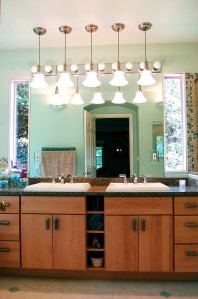
Preparing for your Washington DC, Bethesda, Chevy Chase, Rockville, Potomac remodeling project
Preparing For Your Washington DC, Bethesda, Chevy Chase Remodeling Project
Having the right budget for your remodeling project is important. Unfortunately many people rely on the he said she said approach. There is a better source. According to the Remodeling 2011–12 Cost vs. Value Report (www.costvsvalue.com), following is the link to the pricing data for Washington, DC Metro area, including Bethesda, Chevy Chase, Potomac and Rockville
http://www.remodeling.hw.net/2011/costvsvalue/division/south-atlantic/city/washington–dc.aspx
What the numbers mean.
Although the costs used in the Remodeling Cost vs. Value Report are based on itemized estimates (see “Methodology”), the projects are imaginary. When comparing the data in this report to actual remodeling costs in a particular geographic area, small differences in the size or scope of a project, or in the quality of finishes and accessories the homeowner chooses, can dramatically affect the price. Although the distinction the Report makes between “midrange” and “upscale” projects provides a range of pricing, it cannot account for extreme variations in pricing that many markets have experienced in recent years. Some of this variation is due to the effects of the deep recession and the continued slow recovery. High unemployment among construction workers has glutted the market and available labor far outstrips demand. Material costs, on the other hand, have not retreated and in some cases have dramatically increased. The result is a volatile business climate exhibiting unpredictable pricing within markets and between one market and another.
Smaller Projects
Another factor to keep in mind when comparing costs in the Cost vs. Value Report to local costs for specific projects is that homeowners continue to scale back their remodeling plans, choosing either to reduce square footage below that specified here, or to perform the work in phases to spread the cost over time. Also, homeowners continue to be conservative when choosing fixtures and finishes. They continue to trade the savings on lower-priced items for the ability to afford higher-priced items they deem more essential or more desirable.
Subjective Value
The “value” of a project at resale is always subject to forces that are difficult to predict. Changing how a space is used may meet the immediate needs of the current homeowner but may be at odds with what prospective buyers are looking for. Converting a small bedroom into a grand master bath, for example, may be perceived as the loss of a bedroom rather than the gain of a bathroom. Similarly, adding square footage may solve immediate space needs, but it also adds to maintenance costs and it increases heating and cooling bills, something that may not be welcomed in this era of heightened energy awareness.
How the value of a remodeling project is perceived also depends on a variety of factors that traditionally affect home values, including the condition of the rest of the house, the value of similar homes nearby, and the rate at which property values in the surrounding area are fluctuating. Comparable values are still difficult to judge due to the persistent presence of foreclosed properties and short sales. Until potential buyers are convinced that housing prices have hit bottom, they will not experience any sense of urgency, further contributing to the downward pressure on house prices.
The Cost vs. Value Report provides an accurate snapshot of the national housing market but it cannot be applied accurately to an individual remodeling project for a particular address. Resale value is one factor among many that a homeowner must take into account when making the decision to remodel. At the local level, the best course of action is to obtain construction cost estimates from reputable local remodelers and to talk with an experienced Realtor about home prices in the neighborhood.
Very High and Very Low Values
A number of cities in this year’s Report show cost recouped averages that are above 100% for some remodeling projects. This indicates that, on average, those projects are worth more in resale value than the owner spent to construct them.
This may seem impossible, particularly to homeowners in areas where property values are stalled or still dropping, and it certainly is the exception to the rule. When it does occur, however, it is usually tied to a particularly hot real estate market or to specific projects that are either in high demand from buyers or make a big difference in how buyers perceive a property. If a remodeling project helps a house to meet buyers’ expectations — adding a deck to the only house in the neighborhood without one, for example, or adding a second bathroom in an area where every other home already has two — the homeowner can expect a good return either in the form of a higher selling price or a quick sale or both (assuming everything else about the house is up to standard).
Projects that have been losing resale value in recent years are typically victims of the economic slump, as has been the case with many higher-cost, “upscale” projects. A low ranking may also reflect lack of demand, but this can be misleading at the local level. A backup generator, which historically is near the bottom of the rankings in resale value, may have much more appeal — and higher value to a buyer — in areas where damaging storms are common, or where the local power utility is prone to service interruptions. Similarly, a particular type of project, such as a home office remodel, may appeal to buyers who intend to telecommute or run a home-based business but will have little value to other buyers who would prefer to have an extra bedroom or an exercise room.
Preparing For Your Washington DC, Bethesda, Chevy Chase Remodeling Project
Here is the link again:
http://www.remodeling.hw.net/2011/costvsvalue/division/south-atlantic/city/washington–dc.aspx








